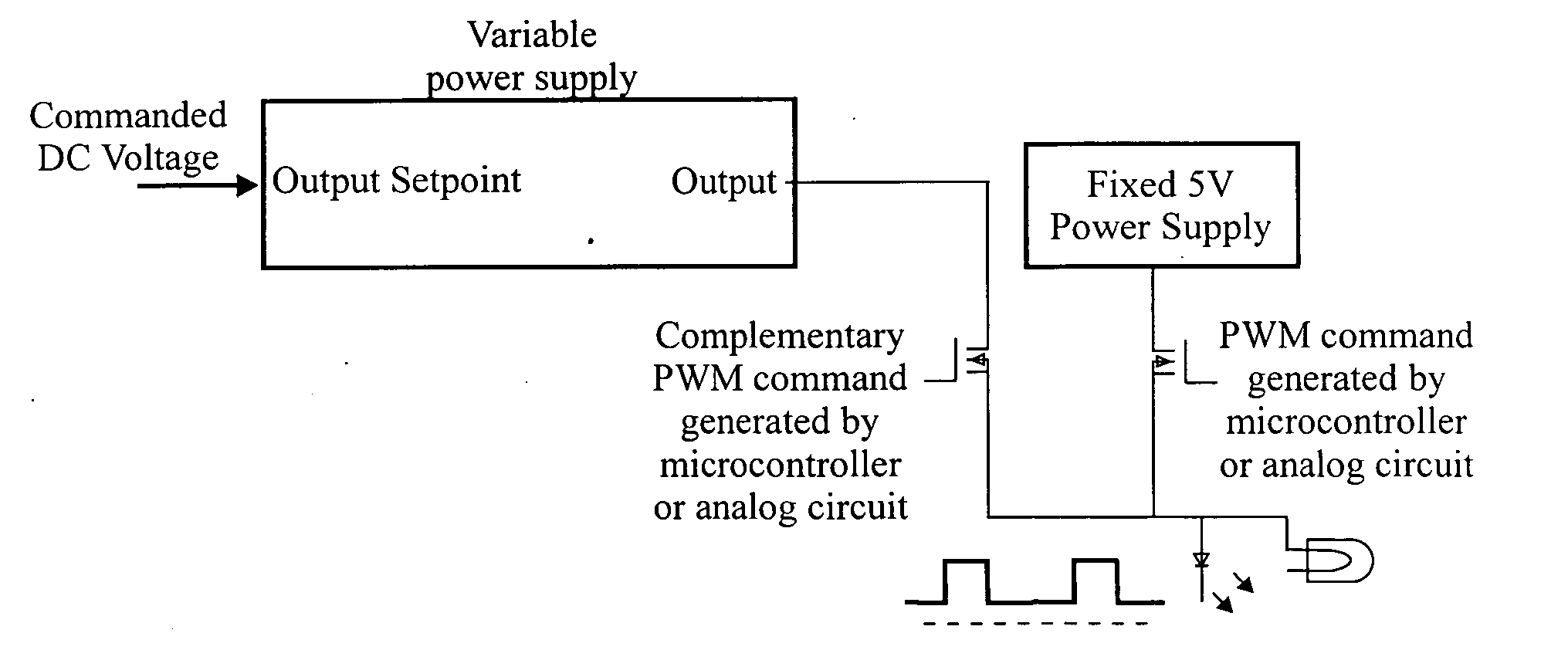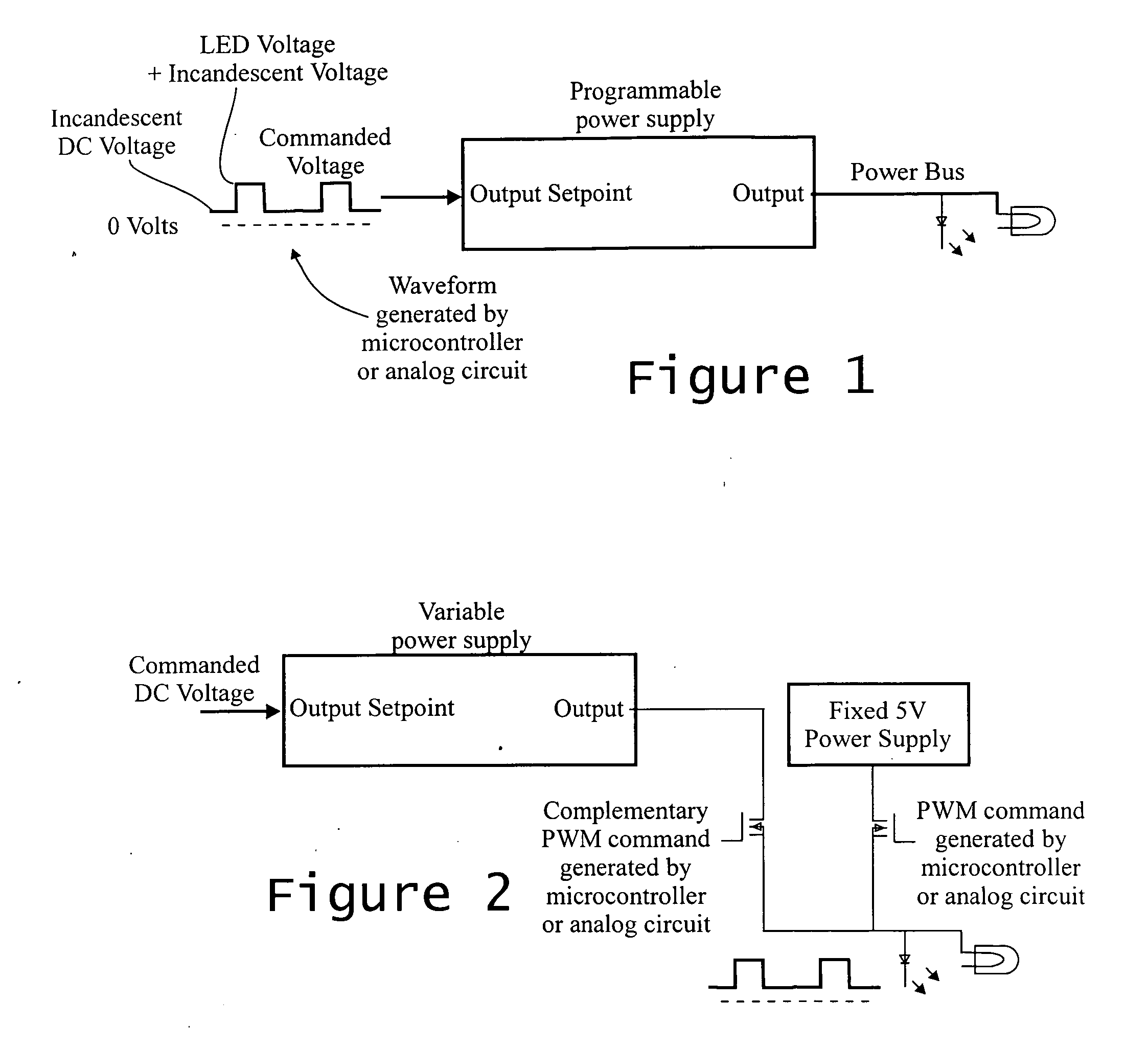Light dimmer for LED and incandescent lamps
- Summary
- Abstract
- Description
- Claims
- Application Information
AI Technical Summary
Benefits of technology
Problems solved by technology
Method used
Image
Examples
example 1
ination (L=0.5)
[0062] Supply voltage (VMAX) is 5 V.
[0063] The signal powering the LEDs and incandescent lamps has two components, a pulse-width modulated (PWM) component and a DC component.
[0064] LED: D=0.5 (50%)
[0065] The 5V signal (VMAX) is PWM modulated at D=50%.
[0066] Incandescent: 0.5=(VRMS15 V)3.4 or 0.816=(VRMS15 V) or 4.078=VRMS1
[0067] Therefore, 4.078 Vrms is needed for the incandescent lamp to light at 50%.
[0068] The incandescent lamp will respond to the total RMS voltage. This is also called a quadrature power solution because the applied signal is composed of two voltages at different frequencies—DC and the PWM signal. The task is thus to compute the DC voltage, present at a duty cycle of (1-D) that will produce the desired RMS voltage at the incandescent lamp.
[0069] RMS voltage of a Waveform at Vmax for D and V2 for 1-D: VRMS=∫01v2(t) ⅆt=∫0DVmax2(t) ⅆt+∫D1V22(t) ⅆt=Vmax2(D)+V22(1-D)solving for V2:V2=(VRMS)2-Vmax2(D)(1-D)(principal...
example 2
ination (L=0.9)
[0072] LED: D=0.9 (90%)
[0073] Incandescent: 0.9=(VRMS15 V)3.4 or 0.969=(VRMS15 V) or 4.847=VRMS1
[0074] VRMS=4.847
[0075] D=0.9
[0076] VMAX=5
[0077] V2=3.159
example 3
ination (L=0.10)
[0078] LED: D=0.1(10%)
[0079] Incandescent: 0.1=(VRMS15 V)3.4 or 0.508=(VRMS15 V) or 2.540=VRMS1
[0080] VRMS=2.54
[0081] D=0.1
[0082] VMAX=5
[0083] V2=2.096 V
PUM
 Login to View More
Login to View More Abstract
Description
Claims
Application Information
 Login to View More
Login to View More - R&D
- Intellectual Property
- Life Sciences
- Materials
- Tech Scout
- Unparalleled Data Quality
- Higher Quality Content
- 60% Fewer Hallucinations
Browse by: Latest US Patents, China's latest patents, Technical Efficacy Thesaurus, Application Domain, Technology Topic, Popular Technical Reports.
© 2025 PatSnap. All rights reserved.Legal|Privacy policy|Modern Slavery Act Transparency Statement|Sitemap|About US| Contact US: help@patsnap.com



